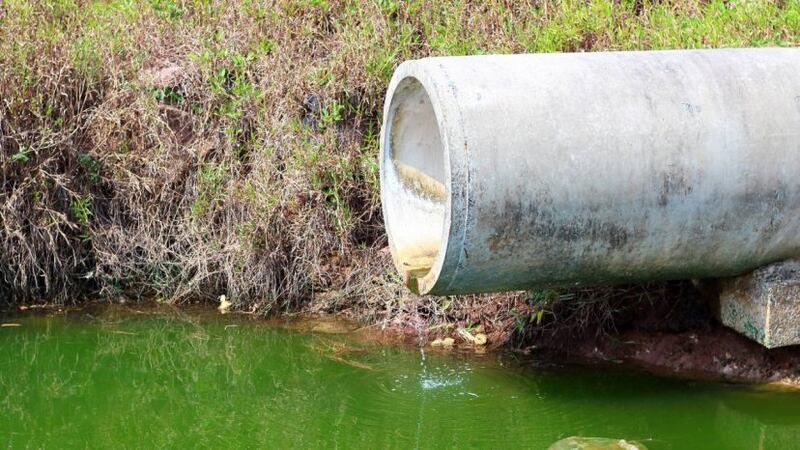Half an Olympic size swimming pool of untreated wastewater contaminated with urine and faeces that was discharged into a city stream was known about by council staff and not stopped for six days.
The sewage levels in the tributary, in a popular Hamilton reserve, were so high that the level of E.coli increased 40 per cent and would have been highly infectious to animals or humans.
There were also toxic levels of ammonia nitrogen that, depending on the length of exposure, would have been lethal to the many native fish living in the stream.
In all, 1.27 million litres of untreated wastewater was discharged into the stream that connects to the Waikato River in October 2020, resulting in a hefty fine for Hamilton City Council.
The city council pleaded guilty and was convicted by Judge Melinda Dickey in the Hamilton District Court after a hearing in June.
Yesterday she released a decision fining the council $76,500 following a prosecution by environmental regulator Waikato Regional Council.
It prompted the city council to publicly apologise for the oversight which it said was caused by a pipe blocked with fats, rags and other materials that should not be put into waterways.
The discharge into the Te Awa O Katapaki Stream in Flagstaff, the point of which was 1.9km from the Waikato River, began on Sunday October 4, and was discovered by council staff two days later.
In her decision, Judge Dickey said the smell of sewage and greyish looking water was discovered at the Delia Court stormwater outlet on the Tuesday afternoon by a consultant environmental engineer undertaking an audit of the city's stormwater wetlands for the council.
He took photographs and he and council structural engineer advised a council infrastructure engineer the next day with a request it be forwarded to a compliance team to investigate.
It was Friday, October 9, two days later, before the infrastructure engineer requested the photographs.
The photos were sent along with a message that the discharge appeared to have been going on for some time and that there was "lots of scum" and a "strong smell".
The infrastructure engineer emailed a compliance team member at 1.38pm that day asking that someone from the City Waters team investigate.
They did not follow up to see if the email had been received or acted upon. The email was not opened until the following Monday.
Meanwhile an arborist working in the area reported the smell of sewage to Waikato Regional Council that Friday.
The regional council alerted the city council which sent a City Deliveries team member to investigate.
They checked the Te Awa O Katapaki Stream from a bridge over Petersburg Drive and did not note any issue or smell any wastewater odour.
They did not look into or inspect the tributary stream below Delia Court that flowed into the Te Awa O Katapaki Stream 100m away on Petersburg Drive, Judge Dickey said.
When the infrastructure engineer's email was opened on Monday morning, October 12, a council compliance officer went to Delia Court and found the discharge.
Contractors were called to the site and a partial blockage of fat, rags and other coagulants in the mains pipe was found and removed, and the discharge was stopped.
In explanation, the city council said discharge of a contaminant into the environment was not its intention, but the wastewater system must have an engineered overflow point somewhere and that it was preferable for that overflow to be engineered to minimise the risk that it would come into direct contact with the public.
It considered the response from its staff on October 12 to be appropriate.
Waikato regional compliance manager Patrick Lynch said it was an "unfortunate case" in that the city council maintained a very large wastewater network for more than 160,000 residents and numerous businesses, usually very well.
"However, in this instance, they have dropped the ball, resulting in avoidable discharges of large volumes of contaminant into a tributary...," Lynch said.
"Our investigation revealed that staff within Hamilton City Council were aware of the contaminated stream on October 6, 2020.
"They also knew it was likely the contamination had been occurring for some time."
He said a series of communication failures within the city council meant the discharge was not stopped until October 12.
A retrospective review of the city council's own data management system indicated loss of wastewater into the environment as early as October 4.
Wastewater comprises used water from domestic and commercial premises, including a range of potential contaminants of varying concentrations with sewage a subset of wastewater contaminated with urine or faeces.
"This is a very clear reminder to any company, or council, that manages large volumes of contaminant as part of their business," Lynch said.
"They must have fit-for-purpose infrastructure, manage that infrastructure well and ensure they take immediate steps to mitigate any discharges that occur into the environment."
Hamilton City Council infrastructure operations general manager Eeva-Liisa Wright said no wastewater overflow to the environment was acceptable, and the council was taking all steps to reduce the risk of it happening again.
"This includes continuing to educate our community on what should and shouldn't go into the wastewater system."
Wright said council had identified areas for improvement to reduce the likelihood of wastewater blockages and overflows occurring.
The Delia Court overflow point was underground and not remotely monitored so council would ensure overflow points were either remotely monitored and alarmed, or removed.
It had now reviewed all 24 overflow points in the wastewater system.
Wright said the council participated in a restorative justice process to apologise and acknowledge the impact and effect the discharge had on tangata whenua and other river and stream users.
Judge Dickey directed that 90 per cent of the fine be paid to the regional council and 10 per cent to the Crown.


